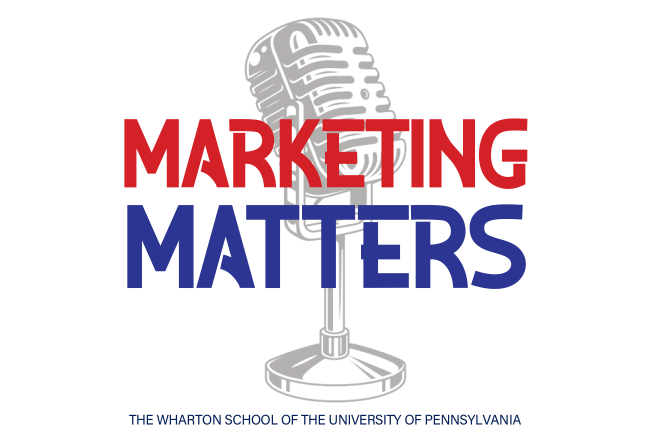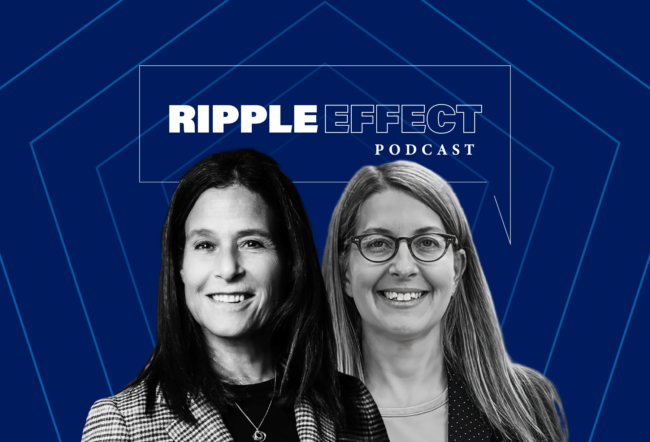The phrase “Netflix and chill” may apply to more than just a lazy Friday night on the couch, remote in hand. New research from Wharton marketing professors Eric Bradlow and J. Wesley Hutchinson, along with Wharton doctoral candidate Tong (Joy) Lu, examines the effects of heavy content consumption in the context of online learning. Recently, Bradlow joined Knowledge at Wharton to discuss their paper, “Binge Consumption of Online Content.”
Listen to the full podcast using the player at the top of this page. An edited transcript of the conversation follows.
Knowledge at Wharton: Let’s start the conversation by talking about what exactly binge consumption is.
Eric Bradlow: It’s an interesting question because three years ago I became really interested in this topic of binge consumption. The original work I did looked at what I called clumpiness. The reason I used the word “clumpiness” back then is that binging has this negative connotation, and binge consumption doesn’t necessarily have to be a bad thing.
The basic idea is very simple, which is consecutive consumption of a particular type of content. For example, it could be a Coursera project where someone could be consuming online content in an educational setting. It could be Netflix. It could be Hulu. In our recent work, we’ve recognized two forms of binging or clumpiness. One is our old definition, which we called “temporal binging.” This is where people just consume content consecutively. Then we have a second form of binging we call “content binging” where, for example, there’s a course in marketing and a course in operations. Let’s imagine you consume marketing, marketing, marketing, marketing. Then you consume operations, operations, operations, operations. Well, that’s content binging. You’ve consumed one show, and then you consumed the next show. But let’s imagine you went marketing, operations, marketing, operations, but didn’t take a break. That would be temporal binging.
What our current research has done, which extended our earlier research, is breaking out clumpiness or binging to two forms: temporal binging and content binging.
“If firms can get people to binge consume more, they can get them to stay on the platform longer.”
Knowledge at Wharton: What were you and your co-authors hoping to find in this research?
Bradlow: Since we’re a business school, identifying the fact that people binge consume is fascinating. But now the question is: What are the downstream implications of it? One thing we were very interested in is do people learn better if they binge consume? The nice thing about our Coursera project, unlike the earlier work I did with Hulu and Netflix data, is we actually have people taking quizzes and, therefore, we have test scores on those quizzes. Now you can ask the natural question: Do people who binge more perform better? The answer is they do, so it’s very interesting. This has implications for how a platform might design its content, which we can talk about as well.
Knowledge at Wharton: What were the key takeaways from this study?
Bradlow: I would say there were two key takeaways. The first one was this idea that I have already talked about, which is there really is a separation between temporal binging and content binging. Temporal binging is people who sit down and say, “I’m going spend an hour right now with online content and just consume consecutively without a break.” With content binging, there are people who say, “I’m going to finish off marketing. I’m going to finish off operations. I’m going to finish off finance. I’m going to do them consecutively.” That was our first major takeaway, that temporal binging and content binging aren’t the same thing.
The second major takeaway was there are real downstream implications. As I mentioned already, people who binge tend to do better. They also tend to stay on the platform longer. If firms can get people to binge more, they can get them to stay on the platform longer, which typically has advertising implications because you can show people more ads if they stay on the platform longer. Also in our case on Coursera, people who binge consume marketing and operations are more likely to complete their finance course. They’re more likely to complete their accounting course. Just like we found in our work three years ago, it appears that binge consumption leads to higher customer lifetime value. That was the key takeaway. We’ve just reinforced that and basically replicated that in an online educational content setting.
Knowledge at Wharton: This seems to have direct implications for entertainment providers like Netflix, correct?
Bradlow: Absolutely. One of the wonderful things about the data we received from the Coursera platform was a natural experiment that happened. Here’s what I mean. We got two years of data from the platform. The first year of data, they did what’s called sequential release. Imagine a four-week course where in week one the material is launched on the site, but not the material for week two. Then week two’s material is launched, then week three. We’re going to roll out the first episode, the second episode and the third episode. It’s the classic way we watched TV when we were kids.
“It appears that binge consumption leads to higher customer lifetime value.”
For the second year of the data on the Coursera platform, they do what everybody does now, which is called simultaneous release. All of the content for the four weeks is released at once. If you want to binge consume it all in the first week, you can do it. If you want to wait until week four and binge consume it, you can do it. What we now compare is what’s called sequential release, which is the old model, and we compare and contrast that to simultaneous release. Not surprisingly, when you do simultaneous release people binge consume more because they have the content. It’s hard to binge consume when you don’t even have the future content. But here’s the key: Firms should think strongly about simultaneous release schedules versus sequential release schedules because the good news in an educational context is that people tend to get higher test scores. They binge consume more, and it leads them to come back and consume more content in the future. So, it’s good for business and it’s good for education.
Knowledge at Wharton: It seems like that would apply to entertainment providers like Netflix also?
Bradlow: Absolutely. We’ve not actually done this with Netflix data. It may be the reason why you see Netflix release a series. They don’t release an episode, they release a series. You could imagine Netflix having done this kind of experiment with what happens if we release one episode at a time versus releasing the entire series? Our research on binge consumption just happens to be on online education, which we think is a fascinating area. But we believe that the same theories, the same findings will hold likely in the online consumption of video content on a Netflix or a Hulu.
Knowledge at Wharton: I know I get impatient when I have to wait for the next episode. Has this really changed consumer behavior in terms of their expectations of being able to watch everything all at once?
Bradlow: You call it impatience, and we call it something a little bit different. There’s a known phenomenon in the behavioral literature called goal gradient. People accelerate their consumption of something as they get near the end. As you get near the goal, your gradient increases. In other words, you work harder as you can see the finish line. This is all lore. I’m running a marathon; as I see the finish line I start sprinting towards the end. But what’s the implication of that? Once you start a course, you’re closer to the finish line. Now the rest of that course looks more attractive compared to some other course that you’ve yet to start. We think it’s the goal gradient that’s causing this type of binge consumption that we’re talking about. You start a series, you see the finish line, you really want to know what the end is going to be, so you accelerate your content consumption. You don’t even want to take breaks. When you start a particular course, you don’t even want to go to the next course. You want to see how marketing ends.
“As you get near the goal, your gradient increases. In other words, you work harder as you can see the finish line.”
Knowledge at Wharton: What do you think you’re going to look at next?
Bradlow: There’s tons and tons of stuff to look at next. No. 1, does it actually apply in other empirical contexts? No. 2, does it apply not just to video consumption, but my original work also looked at purchasing behavior. Does it apply to purchasing context? No. 3, we’re also fascinated by what are called forward-lookingness. In other words, when people are consuming content, are they literally doing it myopically, like I’m just going to consume today what I love? Or are they thinking about the future? This is what academics call forward-looking behavior. As I’m consuming content, am I thinking not only about how much utility am I going to get from that consumption today, but where does that leave me now or an hour from now? And does that future utility [impact] what people are doing today? There are all kinds of what I would call mathematical tests of behavioral theories and other empirical settings that I think we’ll be looking at for years to come.



